a crowdfunded monthly two-episode podcast exploring some of the most popular tales we tell and why it is we tell them • written and narrated by Lucas Brandon with guest appearances by voice actress Kaitlyn Millsap • stay tuned for updates, extras, and more
Don't wanna be here? Send us removal request.
Text
Tale of Tales | update: new Season 2 podcast art!
Tale of Tales now has a Twitter and Instagram (@taleoftalespod) and over there we’ve been celebrating the release of Season 2 with #13DaysofTales, showing off not only the new episode art, but also some new art for the podcast featuring our two costars Lucas Brandon and Kaitlyn Millsap!
Check out Instagram and Twitter for HD versions and fuller descriptions of these new pieces of pod art!


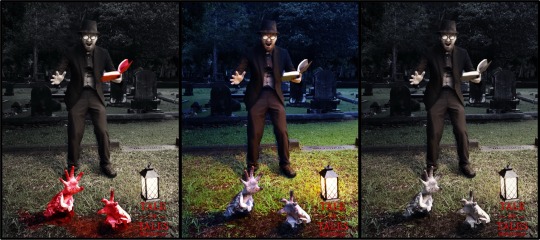







#storytelling#tale of tales#tale of tales podcast#podcast#taleoftalespod#tale of tales pod#mythology#folklore#lord#folktales#scary stories#ghost stories#ghosts#witch#cottagecore#hot wench summer#witchy#art#artwork#pod art#podcast art#scary stories to tell in the dark#Alvin Schwartz#carmen maria machado#the husband stitch#Stacy schiff#Salem#goosebumps#update
44 notes
·
View notes
Text
Tale of Tales | episode: 2.01 “Beauty From Ashes (Part 1)”

Once there was a young noblewoman enslaved by her stepfamily...
In our first episode of season two of Tale of Tales, we'll explore patriarchal European beauty standards, the sordid and surprising interplay of colonization and international trade, and how (not) to try and get your foot to fit a shoe just a teensy bit too small...
https://www.buzzsprout.com/800948/8717612-2-01-beauty-from-ashes-part-1.mp3?download=true
Tales on this episode:
Charles Perrault, “Cendrillon, or The Little Glass Slipper”, Tales of Mother Goose, trans. Andrew Lang (0:06:46-0:23:49)
Jakob and Wilhelm Grimm, “Aschenputtel”, Children’s and Household Tales, trans. D. L. Ashliman (0:27:35-0:47:23)
Giambattista Basile, “The Cinderella Cat”, Il Pentamerone, or The Tale of Tales, trans. Nancy Canepa (0:57:09-1:14:59)
Lin Lan, “Beauty and Pock Face”, Folktales of China, trans. Wolfram Eberhard and Desmond Parsons (1:24:23-1:37:42)
Cyrus Macmillan, “The Indian Cinderella”, Canadian Wonder Tales (1:42:20-1:49:52)
Ai-Ling Louie, Yeh-Shen: A Cinderella Stort from China (1:54:11-2:07:21)
All Music Licensed under Creative Commons BY Attribution 4.0 License
http://creativecommons.org/licenses/by/4.0/
Track list:
"Wanderer" by Alexander Nakarada (0:00:00-0:01:32)
"Sonata in C Minor" by Kevin MacLeod (0:06:46-0:10:26; 0:18:53-0:19:24)
"Dreams Become Real" by Kevin MacLeod (0:11:10-0:17:17; 1:03:02-1:06:01; 1:47:33-1:49:49)
"The Endless" by Kevin MacLeod (0:19:24-0:21:09)
"To The Ends" by Kevin MacLeod (0:21:09-0:23:44; 0:37:52-0:40:18)
"Virtutes Instrumenti" by Kevin MacLeod (0:27:35-0:30:15)
"Sonata 17" by Kevin MacLeod (0:30:15-0:31:22; 1:12:05-1:15:00)
"Love Song" by Kevin MacLeod (0:32:29-0:37:18)
"Danse Macabre - Light Dance" by Kevin MacLeod (0:40:18-0:41:11)
"Danse Macabre - Finale" by Kevin MacLeod (0:41:11-0:41:34)
"Danse of Questionable Tuning" by Kevin MacLeod (0:42:53-0:43:57; 0:44:42-0:45:44)
"Royal Coupling" by Kevin MacLeod (0:46:06-0:47:24)
"Suonatore di Liuto" by Kevin MacLeod (0:57:09-1:01:10)
"Teller of the Tales" by Kevin MacLeod (1:01:25-1:02:16)
"Call To Adventure" by Kevin MacLeod (1:06:01-1:07:37)
"Hidden Agenda" by Kevin MacLeod (1:08:07-1:09:33)
"Master of the Feast" by Kevin MacLeod (1:09:49-1:10:43)
"Procession of the King" by Kevin MacLeod (1:10:43-1:11:58)
"Guzheng City" by Kevin MacLeod (1:24:23-1:26:10)
"Satiate Strings" by Kevin MacLeod (1:26:44-1:27:27)
"Ishikari Lore" by Kevin MacLeod (1:27:31-1:29:25; 1:59:11-2:00:08; 2:01:30-2:02:15)
“Return of Lazarus” by Kevin MacLeod (1:30:10-1:31:46)
“Truth in the Stones” by Kevin MacLeod (1:32:50-1:37:42)
“The Sky of Our Ancestors” by Kevin MacLeod (1:42:20-1:47:33)
“Eastern Thought” by Kevin MacLeod (1:54:12-1:59:11)
“Tempting Secrets” by Kevin MacLeod (2:00:31-2:01:30; 2:02:15-2:03:11; 2:06:35-2:07:23; 2:12:21-2:13:30)
“Opium” by Kevin MacLeod (2:03:11-2:06:30)
Episode Bonus: Little Saddleslut, the Greek Cinderella
While we only touched on a few in this episode, there are countless European variants on the Cinderella tale, most of them recorded after the Brothers Grimm, and not all of them have a protagonist whose nickname revolves around ashes or cinders. One recorded by Edmund Martin Geldart in his 1884 Folk-Lore of Modern Greece goes like this: Three sisters spinning flax decide to kill and eat their mother since she keeps dropping her spindle. The elder two butcher and cook her, but the youngest regrets the decision and refuses to partake, sitting on a saddle in the corner and weeping, which earns her the nickname “Little Saddleslut”. She buries the bones under the hearth only to find them transformed into a cache of gold coins and spectacular heavenly clothing.
On Sunday after her sisters go to church she washes up and dresses in the clothing and goes herself, but throws a handful of gold coins to distract everyone when she leaves. Her clothing is too bright for her sisters to recognize her. On her third try at doing this, she also loses a gold shoe, and the king’s son finds it and declares he will marry the woman it fits. Saddleslut profusely refuses to try on the shoe or marry the prince, but reluctantly does both.
When she gives birth to a baby, her sisters sneak her away in a chest and toss it in a river. An old woman finds her and frees her, and Saddleslut prays to God for shelter in the dark wilderness. God gives her a magic cottage where all the furniture talks to her and obeys her orders. Hunting in the woods, the prince comes across the cottage and awkwardly reunites with her. At her direction, the cottage uproots and takes them back to the city, where the prince chops her sisters into pieces.
#tale of tales#tale of tales pod#taleoftalespod#tale of tales podcast#storytelling#storytelling podcast#podcast#cinderella#charles perrault#folktales#fairytales#folklore#lore#brothers grimm#Giambattista Basile#lin lan#cyrus macmillan#ai-ling louie#scary stories#urban legends#mythology#episode
8 notes
·
View notes
Text
Tale of Tales | episode: Season 1 Finale!

https://www.buzzsprout.com/800948/8664088-behind-the-tales-season-1-finale.mp3?download=true
In this new behind-the-scenes segment from the creators of Tale of Tales, Lucas Brandon and Kaitlyn Millsap wrap up Season 1 of Tale of Tales with some special announcements, some surprise tale casting, and a brand new tale that didn’t make it into the season!
Music Credit:
“Crowd Hammer” by Kevin MacLeod (incompetech.com)
Licensed under Creative Commons: By Attribution 4.0 License
http://creativecommons.org/licenses/by/4.0/
Support the show (https://www.patreon.com/taleoftalespod)
Our Season 2 lineup!

1 note
·
View note
Text
Tale of Tales | update: Season 2 art!
As promised, below the cut is the full lineup of episode art for Season 2!
2.01 — “Beauty From Ashes”

2.02 — “Love Like Salt”

2.03 — “Have You Checked the Children?”
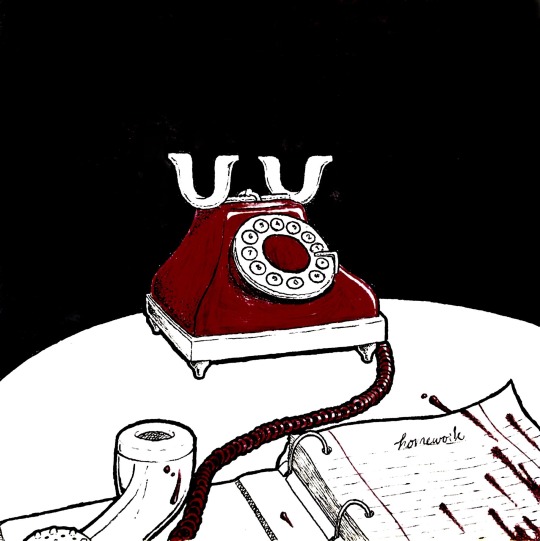
2.04 — “You May Be Next”

2.05 — “Such Things Happen”

2.06 — “Fire and Ice”

2.07 — “‘Till Death Do Us Part”

2.08 — “A Different Kind of Rush”

2.09 — “Travelers”

2.10 — “Rare and Wonderful Things”
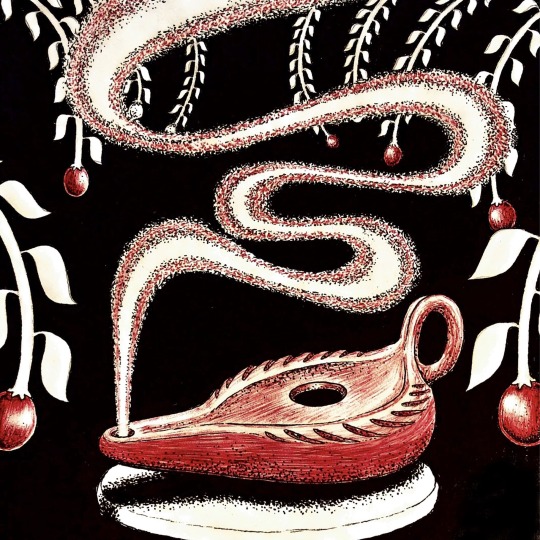
#storytelling#tale of tales#tale of tales podcast#podcast#storytelling podcast#tale of Tales pod#artwork#episode art#update#Cinderella#giambattista basile#brothers grimm#charles perrault#urban legends#scary stories#Aladdin#mythology#folklore#fairy tales
2 notes
·
View notes
Text
Tale of Tales | episode: 1.08 “Risen (Part 2)”
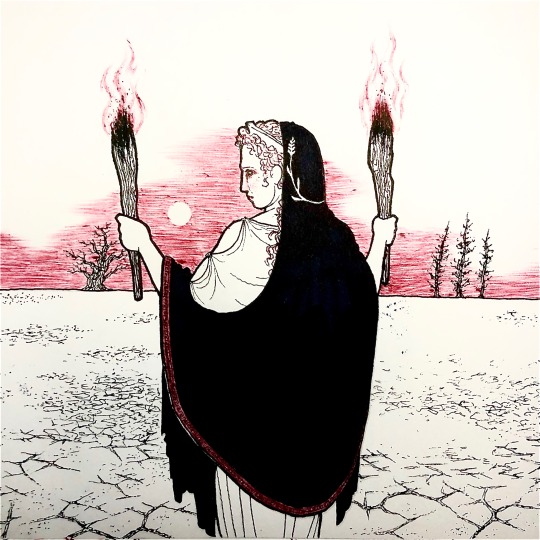
Once there was a god who rose from the dead...
In this (year late) episode of Tale of Tales, we'll explore problematic ancient Roman wedding rituals, a couple imaginative uses for woodworking, and some really questionable baby-rearing techniques.
https://www.buzzsprout.com/800948/8270755-1-08-risen-part-2.mp3?download=true
Tales on this episode:
“Demeter and Persephone”, adapted from the Homeric Hymn 2 to Demeter, trans. Sarah Ruden
“Isis and Osiris”, adapted from Roger Lancelyn Green, Tales of Ancient Egypt
All Music Licensed under Creative Commons BY Attribution 4.0 License
http://creativecommons.org/licenses/by/4.0/
Track list:
"Tranquil Fields - Tense" by Alexander Nakarada
"Burnt Spirit" by Kevin MacLeod
"Satiate Strings" by Kevin MacLeod
"Lord of the Land" by Kevin MacLeod
"Ritual" by Kevin MacLeod
"Afterlife" by Kevin MacLeod
"Decline" by Kevin MacLeod
"Desert City" by Kevin MacLeod
"Ancient Rite" by Kevin MacLeod
"Tabuk" by Kevin MacLeod
"The Sky of Our Ancestors" by Kevin MacLeod
"Reign Supreme" by Kevin MacLeod
"Stormfront" by Kevin MacLeod
"Tribal Joy" by Alexander Nakarada
"Dawn" by Alexander Nakarada
"Return of the Mummy" by Kevin MacLeod
"River Flute" by Kevin MacLeod
"On the Shore" by Kevin MacLeod
"Oppressive Gloom" by Kevin MacLeod
"Reawakening" by Kevin MacLeod
"Unsafe Roads" by Alexander Nakarada
Episode Bonus: Reborn
The Greek god Dionysos has some of the earliest roots of any of the Greco-Roman gods, appearing in the Mycenaean and Etruscan cultures which preceded classical Greece and Rome. His worship, however, was consistently spoken of in the language of the mystery cult — his rituals were called the Bacchic mysteries, which one had to be initiated into, and he was always spoken of as a god from far away, either from Thrace, Asia Minor, or even India. And like the gods of mystery cults, Dionysos was also intimately connected with death and resurrection. In perhaps the most common myth about his origins, he was conceived by the god Zeus and the mortal princess Semele. Zeus’ angry wife Hera disguised herself as an old woman and convinced the pregnant Semele to ask Zeus to appear to her as he appeared to Hera on Olympos, to prove his identity and his love for her. When Zeus reluctantly did so, appearing to her wreathed in thunder and lightning, she was burnt to death in an instant, and with Hermes’ help Zeus quickly performed a C-section and saved the still-living fetus by sewing it up inside his thigh until it was finally ready to be born. Another myth, however, tells of a baby Dionysos whom Hera tried to kill by unleashing the Titans on the condition that they rip him to shreds, resulting in the godling having to be pieced back together and resuscitated. Ever afterward, Dionysos had to travel everywhere in disguise to avoid her wrath. It may be this myth in particular that was recounted at the Dionysia, the annual festival in honor of Dionysos in Athens and the surrounding countryside. Along with the standard libations of wine one might expect, the procession that kicked off this festival also involved baskets and phallic objects such as dildos and baguettes, perhaps hinting at some contact with the Egyptians and their myth of Osiris’ pieces being put back together. At the end of the procession they would sacrifice a bull or a billy-goat (tragos in Greek), and the drunken revelry would spill out into the rest of the city in komoi, mini-parades of orgiastic fervor.
The festival continued for several days afterward with the first dramas, in which people would dress up in costumes like the little Dionysos and reenact famous myths, typically in rhythmic verse. Those that ended gravely for the protagonists were called tragoidai, “goat-songs”, likely in honor of those goats that were killed early on in the festival’s history. Those that ended happily (and often featured raucous, bawdy antics) were called komoidai, or “komos-songs”. One such komoida or comedy by Aristophanes titled The Frogs told a story about Dionysos traveling all the way down to the Underworld to resurrect the playwright Euripides out of despair for the sorry state of theatre — itself a parody of an existing myth in which the god went down to Hades to bring back his mother Semele from the dead. In the play, the typically effeminate Dionysos becomes a drag king, borrowing the hero Herakles’ lion skin in hopes that the creatures of the Underworld will shrink from him in fear—leading to predictable and somewhat unpredictable antics as he inevitably proves not only his own buffoonishness but also his theatrical acumen.
#storytelling#tale of tales#tale of tales podcast#podcast#mythology#christianity#demeter#persephone#hades#Zeus#isis#Osiris#ra#set#nephthys#Anubis#horus#Jesus Christ#st paul#hekate#helios
3 notes
·
View notes
Text
Tale of Tales | episode: 1.07 “Risen (Part 1)”
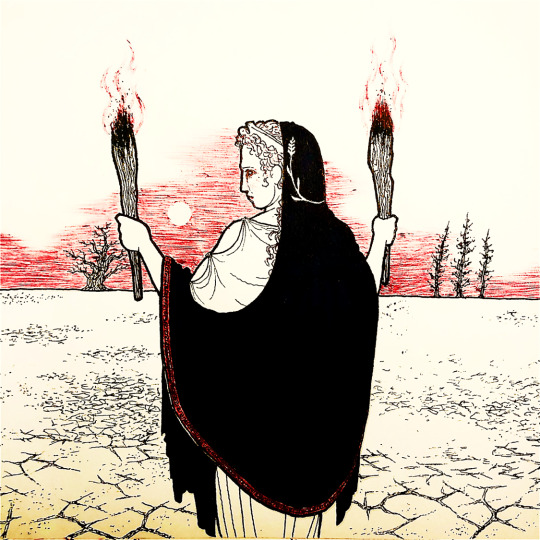
Once there was a god who rose from the dead…
In this (year late) episode of Tale of Tales, we'll explore the complexities of imperialism, the joys (and sorrows) of sex, and why you literally cannot win once you've gotten yourself mixed up in goddesses' interpersonal disputes.
https://www.buzzsprout.com/800948/8267888-1-07-risen-part-1.mp3?blob_id=37471845&download=true
Tale on this episode:
Publius Ovidius Naso, “Venus and Adonis”, The Metamorphoses, ed. Charles Martin (0:18:47-0:43:58)
“Inanna and Dumuzid”, reconstructed from various hymns collected by Samuel Noah Kramer and Diane Wolkstein in Inanna, Queen of Heaven and Earth: Her Stories and Hymns From Sumer (0:51:22-1:29:54)
All Music Licensed under Creative Commons BY Attribution 4.0 License
http://creativecommons.org/licenses/by/4.0/
Track Listing:
“Afterlife” by Alexander Nakarada (0:00:12-0:03:09)
“Tranquil Fields - Eastern” by Alexander Nakarada (0:03:10-0:04:33; 0:54:22-0:56:26; 0:58:13-1:00:40)
“Wanderer” by Alexander Nakarada (0:18:47-0:20:25)
“Stay the Course” by Kevin MacLeod (0:24:32-0:31:17; 1:02:33-1:04:40)
“Ancient Rite” by Kevin MacLeod (0:31:17-0:36:28; 0:51:22-0:54:22)
“Tranquil Fields - Peaceful” by Alexander Nakarada (0:37:55-0:41:55; 1:33:32-1:34:36)
“Send For the Horses” by Kevin MacLeod (0:41:55-0:43:58)
“The Enemy” by Alexander Nakarada (1:04:38-1:07:28)
“Oppressive Gloom” by Kevin MacLeod (1:08:39-1:14:19)
“Reign Supreme” by Kevin MacLeod (1:14:50-1:15:53)
“Expeditionary” by Kevin MacLeod (1:15:51-1:18:57)
“Gathering Darkness” by Kevin MacLeod (1:20:29-1:25:06)
“Burnt Spirit” by Kevin MacLeod (1:24:55-1:26:45)
“Tempting Secrets” by Kevin MacLeod (1:26:24-1:29:54)
Episode Extra: The Afterlife of Mary Magdalene
There is another woman, closer to home for Christianity, who has been known for the love she had for a dead man. Though the number of women at the empty tomb varies depending on the gospel being read, the Christian Church has traditionally recognized the round number of the Three Marys: Mary the mother of Jesus, Mary Salome, and Mary Magdalene, also known as the Myrrh Bearers since they brought precious ointments with them to embalm Jesus’ body. Mary was a popular name at the time — in Hebrew, it’s Miriam, the name of the prophetess who helped Moses lead the Israelites out of Egypt during the Exodus. In a time of political dissatisfaction and nostalgia for an imagined past of religious and national freedom, many Jewish parents of the first century named their children with the expectation of an imminent reversal of fortunes.
Mary Magdalene is an enigmatic figure from her very first appearance in text: her title “Magdalene” doesn’t translate very well into anything. The most common scholarly reconstruction is that it means she was from Magdala, a large fishing village in the Galilee, but even that isn’t very certain. Mark and Matthew only refer to her by name, without any other description beyond her attachment to Jesus’ following. Luke informs us that she had been rid of seven demons by Jesus, but also that (somewhat more importantly) she and a couple other women were his patrons — they funded his work. In spite of her mysterious past as a demoniac, then, her role in Jesus’ ministry reflected not simply womanly servitude but the power and prestige of a typical rich Roman woman helping pay a client’s bills — a position common enough in early Christianity to afford women quite a lot of say in the Church in the first few centuries CE.
Naturally, there was some tension about these powerful roles, and the second and third centuries saw increased squeamishness from Christian men about women’s outspokenness, and for one reason or another Mary Magdalene became, for both misogynist and proto-feminist sides of the debate, the prototypical woman disciple. The second century Gospel of Thomas ends with a scene in which Peter, prototypical of male discipleship, asks Jesus to tell Mary Magdalene to go away since “women don’t deserve to live”, but Jesus reassures him that she can stay because his guidance will make her (at least spiritually) male — a pro-Mary Magdalene take in which women are allowed to be prominent in the Church but must act like men to do so. Another somewhat-easier-to-digest text, named the Gospel of Mary by scholars, describes a discussion between the disciples after Jesus has gone back to heaven — Mary Magdalene tries you reassure the male disciples that Jesus promised her he’d be with them forever, and Peter responds that Jesus would never have spoken alone to a woman, inciting a furious argument between all the disciples about Mary’s place. Later legends told how Mary Magdalene sailed to Rome after Jesus’ resurrection and tried to convert Emperor Tiberius, bringing a white chicken egg as a humble gift; when Tiberius claimed a man could no more rise from the dead that her egg could change color, the egg in her hand turned blood red — a potential source for the modern Easter egg tradition.
Misogynistic arguments found support in Mary’s sordid demonic past and her subservience to Jesus and relative silence in the New Testament gospels themselves. The medieval pope Gregory XIV did the Magdalene a further disservice by proclaiming (with no evidence) that she was the same woman as the “woman of ill repute” in Luke 9 who cried on Jesus’ feet, instigating a number of inventive portrayals of Mary Magdalene as the terrible scandalous harlot whom Jesus converted into a repentant, quiet saint. A sorry, penitent Mary Magdalene, usually tantalizingly undressed but still covered by her long hair, sometimes contemplating her own mortality via a skull in one hand, became a favorite subject of Christian artists, giving the Church a whore to complement Mother Mary.
The past century has seen attempts to revitalize and reclaim the image of the Magdalene. Some attempts have been less progressive than others — such as the rumor that, rather than a sex worker (gross), Mary Magdalene was Jesus’ wife (good), an allegation that inspired The Last Temptation of Christ and Dan Brown’s The Da Vinci Code. More recently, Pope Francis in 2012 declared Mary Magdalene “apostle to the apostles”, based on the fact that in the Gospel of John she is not only the only woman at the empty tomb, but also the first person to see Jesus alive again, and the one whom he himself entrusts with the news of his resurrection, essentially making her not only the very first apostle, but also the very first Christian. In her book The Resurrection of Mary Magdalene, feminist theologian Jane Schaberg notes, “Mary Magdalene is the madwoman in Christianity’s attic... hidden there because of an open and not fully appreciated secret, and its implications, at Christianity’s core: that the male disciples fled and the women did not.”
#tale of tales#tale of tales pod#tale of tales podcast#easter#christianity#jesus christ#mary magdalene#dying and rising god#mystery cult#cults#mythology#ancient rome#ancient greece#podcast#storytelling#storytelling podcast#ancient egypt#ancient sumer#mesopotamia#ishtar#inanna#aphrodite#adonis#tammuz#dumuzid#resurrection#judaism
6 notes
·
View notes
Text
Tale of Tales | update: new Patreon page!
Hi all! Thanks to everyone who’s supported the pod so far! Here’s yet another place to show your love and get updates about the pod, as well as to get exclusive patron content and have your say in the creative process! I’m still working on plenty of great content during this hiatus so don’t worry on that front. Stay tuned!
0 notes
Text
Tale of Tales | episode: 1.06 “Breadcrumbs”
Once there were children lost in a wood...
In this (late) episode of Tale of Tales, we'll explore ancient garbage dumps, abandonment issues, and how best to handle sleeping in the same room as a bunch of ogre toddlers (it involves lots of clothes-swapping and blood).
https://www.buzzsprout.com/800948/episodes/3257740#
Tale on this episode:
Jakob and Wilhelm Grimm, “Hansel and Gretel”, Children’s and Household Tales, ed. D.L. Ashliman (0:06:22-0:22:36)
Jakob and Wilhelm Grimm, “Little Brother and Little Sister”, Children’s and Household Tales, ed. D.L. Ashliman (0:25:18-0:42:31)
Giambattista Basile, “Nennillo and Nennella”, The Pentamerone, or Tale of Tales, ed. Nancy L. Canepa (0:44:03-0:57:07)
Charles Perrault, “Little Thumb”, Mother Goose Tales, ed. Andrew Lang and D.L. Ashliman (0:59:18-1:22:33)
“Maol a Chliobain”, collected by J.F. Campbell in Popular Tales of the West Highlands, a variation of Joseph Jacobs’ more popular “Molly Whuppie” (1:29:24-1:43:13)
All Music Licensed under Creative Commons BY Attribution 4.0 License
http://creativecommons.org/licenses/by/4.0/
Track Listing:
“Wanderer” by Alexander Nakarada (0:00:12-0:01:55)
“Dark Times” by Kevin MacLeod (0:06:22-0:09:18, 0:11:25-0:14:51; 0:59:17-1:07:13)
“Royal Coupling” by Kevin MacLeod (0:14:58-0:16:25; 0:54:57-0:57:04)
“Bent and Broken” by Kevin MacLeod (0:16:25-0:21:34; 0:36:00-0:38:58)
“The Descent” by Kevin MacLeod (0:21:25-0:22:38; 1:17:42-1:20:23; 1:21:30-1:22:36)
“Send for the Horses” by Kevin MacLeod (0:25:24-0:30:31; 0:39:12-0:42:33; 1:07:13-1:09:44)
“Folk Round” by Kevin MacLeod (0:30:38-0:33:38)
“Midnight Tale” by Kevin MacLeod (0:44:03-0:46:36)
“Dungeons and Dragons” by Alexander Nakarada (1:29:24-1:32:30; 1:36:01-1:36:45; 1:37:18-1:37:49; 1:38:42-1:39:23; 1:42:47-1:43:13)
“The Dread” by Kevin MacLeod (1:33:00-1:35:07; 1:37:49-1:38:14; 1:39:23-1:42:38)
“Crossing the Chasm” by Kevin MacLeod (1:35:07-1:36:01; 1:36:45-1:37:18; 1:38:14-1:38:42; 1:41:30-1:42:31)
Tale on this episode:
Episode Extra: Marie de France’s Twin Trees
One of the oldest European literary depictions of child abandonment comes from Le Lai de le Fresne, or “The Lai of the Ash Tree”, a 12th century lai (or romantic poem) by the enigmatic Anglo-Norman poetess Marie de France. It begins with a knight’s wife who accuses her sister-in-law of adultery for having twins (since a common medieval superstition was that twins meant two fathers) and subsequently gets her locked up for it. Karmically, she herself then bears twin girls, and is so horrified she begs her handmaid to kill one of them. Instead the maid wraps the baby in an ornate embroidered blanket and leaves her under an ash tree near an abbey, causing her to be named ‘Ash’. A great lord named Gurun falls in love with Ash and begins visiting her consistently in the abbey, eventually convincing her to elope with him to avoid scandal if she becomes pregnant. His knights, however, convince him he must marry a wealthy noblewoman named Hazel so that he has a legitimate household, and Ash becomes the new bride’s handmaid. Taking her demotion in stride, Ash decorates the nuptial bed with her own embroidered blanket — only for Hazel’s mother to see it and realize that Ash is her long lost daughter and Hazel’s long lost sister. Now that Ash’s noble lineage is confirmed, she and Gurun can finally marry, and Hazel finds another wealthy lord to wed.
#folklore#lore#storytelling#tale of tales#tale of tales podcast#episode#fairy tales#podcast#children#abandonment#infanticide#archaeology#history#hansel and gretel#witch#gingerbread house#dark forest#scary stories#little thumb#brother and sister#molly whuppie#pentamerone#brothers grimm#charles perrault#giambattista basile
9 notes
·
View notes
Text
Tale of Tales | update: April 2020 Episodes
https://www.buzzsprout.com/800948/episodes/3225310#
Hi there Tale of Tales listeners. I wanted to thank you all for your incredible patience this past month and express my fondest hopes that you are all well and safe. I also wanted to grant you an update on the podcast. We’re still running, but I had some serious technical issues at the beginning of the month that meant I had to scrap and re-record large portions of the two March episodes less than a week from the planned air date. I managed to get our Baba Yaga episode “Know More, Grow Old” edited on time, by the grace of God, but our Hansel and Gretel episode “Breadcrumbs” has been sitting unworked on since then because of the chaos surrounding COVID. As some of you may know I’m a grad assistant at FSU, and not long after the air date for “Know More, Grow Old” we had both Spring Break as well as the sudden and unexpected news that all classes and work would be moving off campus and online for the rest of the semester. In addition there is now a statewide stay-at-home order here, so as of right now I’m only just settling into the new normal so to speak.
All that is to say I haven’t up and vanished into smoke. Our late episode “Breadcrumbs” will be out by Monday, and it’s a very special one with my co-star Kaitlyn Millsap so I’m very excited about it. We’ve already recorded the next month’s worth of episodes as well, so those should be up on time or at the most a couple days late. For April our first episode of the month will be “Fire and Ice”, a special Kickstarter-funder inspired episode tracking the trickster gods of Norse mythology, as well as a special Easter episode called “Risen” about the dying-and-rising-god trope in ancient Mediterranean traditions. The episode art for the four episodes mentioned here is posted below!
If you’re anything like me this nervous period probably has you refreshing your podcast app constantly, desperately trying to find something to listen to and escape for a moment from all the anxiety right now. Because of that, I want you to keep your eyes peeled this month for a special extra episode I’ll be putting out. It’s a bit out of the field of things we normally cover on the show—it’ll be a bit more ASMR based, and pretty basic in terms of editing because I’d like to get it out to you guys as soon as possible—just me reading some of my favorite excerpts from my personal favorite book of all time, a book that really does a lot of soothe me when I’m feeling lonely and frustrated. I hope you guys will enjoy it.
Stay safe out there. Peace.

1.05 “Know More, Grow Old”

1.06 “Breadcrumbs”

1.07 “Fire and Ice”

1.08 “Risen”
#update#folklore#lore#storytelling#tale of tales#tale of tales podcast#baba yaga#witches#hansel and gretel#fairy tales#mythology#norse mythology#loki#freyja#greek mythology#sumerian mythology#egyptian mythology#demeter#persephone#isis#osiris#inanna#ishtar#adonis#aphrodite#venus
0 notes
Text
Tale of Tales | episode: 1.05 “Know More, Grow Old”

Once there was a hag in a hut on chicken legs...
***NOTICE: Due to technological issues, the audio on this episode may be a bit off, and this month's second episode will be a few days late! My apologies!***
In this episode of Tale of Tales, we'll explore the murky academic origins of the study of folklore, the innate patriarchal fear of women wanting things, and the best way to escape an immortal demon (it involves a really fast horse, but not in the way you expect).
https://www.buzzsprout.com/800948/episodes/2999125#
Tales on this episode:
Alexander Afanasyev, “The Baba Yaga”, Russian Fairy Tales (0:03:35-0:05:55)
Alexander Afanasyev, “Vasilisa the Beautiful”, Russian Fairy Tales (0:08:33-0:09:48)
Alexander Afanasyev, “Maria Morevna”, Russian Fairy Tales (0:12:36-0:15:52)
All Music Licensed under Creative Commons BY Attribution 4.0 License
http://creativecommons.org/licenses/by/4.0/
Track Listing:
“Bent and Broken” by Kevin MacLeod (0:00:00-0:04:30; 0:57:10-1:01:36)
“Man Down” by Kevin MacLeod (0:04:40-0:07:39)
“Folk Round” by Kevin MacLeod (0:07:39-0:08:31)
“Return of Lazarus” by Kevin MacLeod (0:08:31-0:12:38)
“The Descent” by Kevin MacLeod (0:12:35-0:14:00; 0:34:31-0:35:31)
“Fantasy Ambience” by Alexander Nakarada (0:17:28-0:21:22)
“Wanderer” by Alexander Nakarada (0:21:22-0:23:04; 0:44:35-0:53:32)
“Dungeons and Dragons” by Alexander Nakarada (0:23:08-0:24:45; 1:01:36-1:05:03)
“The Dread” by Kevin MacLeod (0:24:29-0:34:20)
“Royal Coupling” by Kevin MacLeod (0:41:33-0:42:01)
“Dark Times” by Kevin MacLeod (0:53:31-0:57:10)
Episode Extra: Another “Baba Yaga” Tale
Many of the Baba Yaga stories I came across in researching this episode featured her in such a small role that even though I liked the stories, they didn’t feel right for a Baba Yaga episode. Ironically, however, Afanasyev also collected several different tales in which Yaga is the main antagonist and therefore the name of the story is simply “The Baba Yaga”. This is another “Baba Yaga” tale that didn’t make the cut since it’s too similar to a tale type I’ll be covering later in the year.
A widowed peasant with a young daughter married a widow with a daughter of her own. The stepmother treated the girl so cruelly that the father decided to take her into the woods one day — to Baba Yaga’s house. (Baba Yaga seems to be a much less commonly malevolent figure in this tale — more neutral.) Baba Yaga says if the girl will serve her she will reward her, so the father leaves her there. The girl’s only chores are to spin yarn, make a fire, and cook dinner. The girl evidently doesn’t know how to spin though; but while she is making dinner some nice come out and offer to teach her how in exchange for some gruel. Yaga is so pleased she gives her a bunch of beautiful dresses. The same pattern persists: when the girl is stuck in something, the mice offer to show her what to do in exchange for food, and she becomes such a dutiful servant that Yaga keeps lavishing presents on her.
One day the stepmother sends the father back out into the woods to see if the girl is still alive. When he finds her so well off, he brings her back home. The house dog barks that a young lady is coming home, and the stepmother beats him and tells him it’s only bones rattling in a basket. When the girl arrives and the stepmother sees how well she’s prospered, she talks the father into taking her own daughter to Yaga.
The girl’s stepsister is lazy and spiteful, and refuses to do anything, even when the mice offer to help her. Yaga becomes so angry she dismembers her and (presumably after eating her flesh) dumps her bones in a basket. The father comes and fetched the bones and as he’s coming back, the dog barks that bones are rattling in a basket, causing the stepmother to beat him and tell him he should say a young lady is coming. When the husband arrives, the narrator simply says the stepmother “moaned and groaned. There’s a tale for you, and a crock of butter for me!”
#folklore#lore#storytelling#tale of tales#tale of tales podcast#episode#podcast#baba yaga#russia#russian folklore#alexander afanasyev#russian fairy tales#patriarchy#witches#witch#koschey the deathless#vasilisa the beautiful
23 notes
·
View notes
Text
Tale of Tales | episode: 1.04 “Driven Insane”
Once there was a woman alone in a car late at night...
In this episode of Tale of Tales, we'll explore America's dark history with Lover's Lanes, the UK's dark history with hatchets, and society in general's dark history with *checks notes* lots and lots of minority groups.
https://www.buzzsprout.com/800948/episodes/2728609#
Tales on this episode:
Alvin Schwartz, “The Hook”, Scary Stories to Tell in the Dark (0:08:32-0:10:19)
Richard and Judy Dockrey Young, “Don’t Look Back”, The Scary Story Reader (0:12:18-0:17:45)
“The Hairy-Armed Hitchhiker”, retold from various sources published by Jan Harold Brunvand in The Vanishing Hitchhiker and David Mikkelson on snopes.com (0:24:10-0:28:01)
“The Killer in the Back Seat”, adapted from Alvin Schwartz, "High Beams", Scary Stories to Tell in the Dark (0:30:44-0:33:22)
Thomas J. Craughwell, “Theft Takes A Holiday”, Urban Legends (0:34:40-0:36:24)
“The Nuts”, adapted from Thomas J. Craughwell, "The Flat Tire and the Madman", Urban Legends (0:43:43-0:46:03)
All Music Licensed under Creative Commons BY Attribution 4.0 License
http://creativecommons.org/licenses/by/4.0/
Track Listing:
“Bent and Broken” by Kevin MacLeod (0:02:04-0:08:33)
“In Your Arms” by Kevin MacLeod (0:08:32-0:08:51, 0:12:17-0:12:54)
“The Dread” by Kevin MacLeod (0:08:51-0:10:19)
“Return of Lazarus” by Kevin MacLeod (0:13:15-0:17:45)
“Spider Eyes” by Kevin MacLeod (0:20:03-0:28:07, 0:43:43-0:46:03)
“The House of Leaves” by Kevin MacLeod (0:31:08-0:33:22)
“Bass Vibes” by Kevin MacLeod (0:34:39-0:36:24)
“Night On the Docks - Sax” by Kevin MacLeod (0:46:03-0:47:03)
Show Extras: The Fingers in the VW Bug
Another Lover's Lane legend that ends similarly to "The Hook" dates to the mid-twentieth century. It centers on a young guy who takes a girl out in his VW Bug to a local, well-frequented Lover's Lane spot -- in some versions a secluded woody area, in others a drive-in movie. While they're there, a bunch of rabble-rousers show up looking for trouble -- in some versions a biker gang, in others a bunch of drunk jocks/punks from the local school. When the boy tries to tell them to go away, they leave their vehicle(s) and surround his Bug menacingly. He starts the car and tries to take off, but a bunch of them grab his bumper to stop him. They only succeed for a moment, however, before the weight of the car is too much for them and he speeds off amidst a chorus of yells from the troublemakers. It's only when he gets home that he finds the awful lasting evidence of the night's adventure -- a bunch of severed fingers lodged in his bumper.
#tale of tales podcast#tale of tales#podcast#storytelling#episode#scary stories#scary stories to tell in the dark#urban legends#folklore#lore#driving#the hook#the boyfriends death#the hairy armed hitchhiker#the killer in the back seat
5 notes
·
View notes
Text
Tale of Tales | episode: 1.03 “In A Dark, Dark House”
Once there was a house with something sinister inside it...
In this episode of Tale of Tales, we'll explore the ghosts of our folkloric past, the insecurities that surround new places and new responsibilities, and how best to survive dismembered body parts falling down your chimney (spoiler: it involves more bowling than you might expect).
https://www.buzzsprout.com/800948/episodes/2647366-1-03-in-a-dark-dark-house#
Tales on this episode:
“In A Dark, Dark Wood”, retold from memory from common variants (0:00:00-0:02:02)
Alvin Schwartz, “The Guests”, Scary Stories to Tell in the Dark, adapted from a report in Louis C Jones’ Things That Go Bump in the Night (0:03:35-0:05:55)
Alvin Schwartz, “What Do You Come For?” Scary Stories to Tell in the Dark (0:08:33-0:09:48)
Alvin Schwartz, “Sounds”, More Scary Stories to Tell in the Dark (0:12:36-0:15:52)
Alvin Schwartz, “Me Tie Doughty Walker”, Scary Stories to Tell in the Dark, adapted from Herbert Halpert’s transcription of “The Rash Dog and the Bloody Head” (0:19:23-0:23:10)
Alvin Schwartz, “The Haunted House”, Scary Stories to Tell in the Dark, adapted from a tale reported in Richard Chase’s American Folk Tales and Songs (0:23:44-0:30:17)
Jakob & Wilhelm Grimm, “The Boy Who Went Forth to Learn What Fear Was”, Children’s and Household Tales (0:32:14-0:52:11)
Alvin Schwartz, “Is Something Wrong?”, Scary Stories 3: More Tales to Chill Your Bones, adapted from a tale reported in Louis C Jones, “The Ghosts of New York” (0:53:51-0:55:22)
Alvin Schwartz, “Footsteps”, Scary Stories 3: More Tales to Chill Your Bones, adapted from a Canadian tale reported in Helen Creighton’s Bluenose Ghosts (0:57:54-1:00:12)
“Reflection”, retold from several online variants (1:01:43-1:04:36)
All Music Licensed under Creative Commons BY Attribution 4.0 License
http://creativecommons.org/licenses/by/4.0/
Track Listing:
“The Dread” by Kevin MacLeod (0:00:01-0:01:41, 0:47:42-0:50:48)
“Return of Lazarus” by Kevin MacLeod (0:02:15-0:03:11, 0:03:36-0:05:55, 0:08:30-0:09:46, 0:41:50-0:47:30)
“The House of Leaves” by Kevin MacLeod (0:13:18-0:15:49)
“Gathering Darkness” by Kevin MacLeod (0:19:24-0:23:03)
“Spider Eyes” by Kevin MacLeod (0:23:44-0:30:18, 1:01:43-1:04:36)
“Danse of Questionable Tuning” by Kevin MacLeod (0:32:14-0:34:17, 0:35:04-0:37:08)
“Wanderer” by Alexander Nakarada (0:38:28-0:41:34)
“Arcadia” by Kevin MacLeod (0:51:23-0:52:11)
“Unease” by Kevin MacLeod (0:53:51-0:55:20)
Show Extras: Poltergeists
This episode contains by far the most stories of all the episodes I've planned so far for the podcast's first few months of existence, but there were still a few that I wasn't able to include. Some of them will probably appear in future episodes, but this comedic extra from Alvin Schwartz's collection is probably too contained to this episode's subject matter to fit with any future ones. In his second book, More Scary Stories to Tell in the Dark, Schwartz tells a story he calls "Thumpity-Thump", told from the perspective of a family that moves from Schoharie to Schenectady and rents a house "awful cheap 'cause it was spooked", though they themselves "didn't take no stock in spooks." Similar to in "The Haunted House" and Pliny the Younger's tale, they hear a commotion their first night there and investigate, following the sound down into their cellar. The story breaks tradition a bit in that in this case the noise turns out to be a chair hopping up and down on top of one particular spot on the floor. When they dig up the floor there they find a box containing "the body of a man all smooched with blood." The family, believing suspicion will be placed on them if they report the find, rebury the body and pack up to leave -- all while the chair, "awful mad", keeps hopping up and down insistently. The family reports being happier back in Schoharie, "where chairs stay where they're put and don't go rarin' and rampagin' roun', scarin' folks out of their wits, pointin' out murders and goodness knows what!"
In his notes, Schwartz explains that he adapted the tale from Emelyn E. Gardner, who reported the story in her book Folklore from the Schoharie Hills, New York as it was told to her by a New York woman in 1914. Schwartz identifies the haunting in this tale as a "poltergeist", or "noise ghost", an invisible entity that makes its presence known by moving things around and making noise, sometimes neutrally but also sometimes malevolently, smashing dishes, setting fires, and ripping clothing. Schwartz documents another poltergeist story, "The Trouble", in his third book -- this one far more harrowing, as Schwartz claims it is based on true events that may have themselves been inspiration for the eventual feature film named after the frightful spirits themselves: Poltergeist.
#tale of tales podcast#tale of tales#storytelling#haunted house#ghost#ghostlore#ghost stories#scary stories#urban legends#lore#folklore
45 notes
·
View notes
Text
Tale of Tales | episode: 1.02 “A Mouth Great & Wide”
Once there was a girl who encountered a wolf...
In this episode of Tale of Tales, we'll explore the time-old tradition of victim-shaming, color theory in folklore, and how best to escape a crossdressing werewolf (spoiler: the easiest is just to excuse yourself to the bathroom).
https://www.buzzsprout.com/800948/2483558-1-02-a-mouth-great-and-wide.mp3?blob_id=8165108&download=true
Tales on this episode:
Emily Carroll, “In Conclusion”, Through the Woods (2014) — 00:14-01:48
Charles Perrault, “The Little Red Chaperon”, Stories of the Past with Morals, ed. D. L. Ashliman and Lucas Brandon (1697 [1999/2019]) — 10:57-16:12
Jakob & Wilhelm Grimm, “Little Red Cap”, Children’s and Household Tales, ed. D. L. Ashliman (1812 [1999]) — 20:19-26:42; 28:25-30:20
Ed Young, Lon Po Po (1990) — 31:23-39:29
Achille Millien, “The Grandmother” (c.1870) — 40:29-44:03
All Music Licensed under Creative Commons BY Attribution 4.0 License
http://creativecommons.org/licenses/by/4.0/
Track Listing:
"Fantasy Ambiance" by Alexander Nakarada (serpentsoundstudios.com) — 00:12, 10:50, 40:24, 51:08
"Dark Tension Rising" by Mattia Cupelli (mattiacupelli.com) — 11:55, 22:37, 46:34
"Ancient Winds" by Kevin MacLeod (https://incompetech.com) — 20:17
"Return of Lazarus" by Kevin MacLeod (https://incompetech.com) — 28:24, 31:56
"Eastern Thought" by Kevin MacLeod (https://incompetech.com) — 31:23, 38:42
"The Dread" by Kevin MacLeod (https://incompetech.com) — 41:12, 47:51
Show Extras: Grandma’s Hungry
One of the features of the Little Red Riding Hood tradition that I didn’t get to explore on this episode was one that likely jumped out to most listeners unfamiliar with the earlier, gorier versions of the tale: the theme of cannibalism. In variants falling within the older “False Grandmother” or “Finta Nonna” tradition, such as the last tale I told on the episode, the heroine unwittingly eats or almost eats bits of her dead grandmother. In these versions of the tale, we simultaneously come to terms with the facts that (1) the grandmother here is truly irrevocably dead, and (2) our protagonist has accidentally engaged in cannibalism at the disguised wolf’s urging, forced without knowing to do what the wolf is about to do to her. In a way, depending on how you read it, the scene perhaps invites us to consider what aspects of the heroine’s own appetites — as well as our own — might be particularly wolfish.
Another Chinese variant of the tale that I wasn’t able to include on the pod is called “Grandma Tiger” or “The Tale of the Tiger-Woman”, which was a fairly interesting cross between the Lon Po Po variant collected by Ed Young and the Finta Nonna tradition. In it, the antagonist is a tigress, not a wolf, and she is able to assume human form to trap people. One day she comes across a little girl and boy bringing some jujube-beans to their maternal grandmother, whom they have not met but has been described to them by their parents. When they tell the tiger-woman their grandmother has seven moles on her face, she slyly puts seven little shells on her cheeks and pretends to be her to lure the children away. She takes them to her cave, explaining she is staying their while her husband renovates their house. When they get into bed, the boy lies down under the woman’s head and the girl lies at her feet, and when she feels a furry tail the woman excuses it as a piece of her sheepskin blanket.
During the night, the little girl hears munching, and assumes her “grandmother” to be eating the beans. She tries to get one herself for a midnight snack, but instead finds herself holding her brother’s dismembered finger. Realizing her danger she excuses herself to go outside and relieve herself, and the tiger-woman ties a cord around her foot under the pretense that it’s so she won’t be carried off by tigers. (Ironic, huh?) Outside, the girl recognizes the “cord” is her brother’s intestine and, after getting rid of it, climbs a tree to hide. The old woman sees her in the tree and goes off to get help. While she is gone the girl escapes with a passing cartman who leaves his shirt in the tree so the woman will think the girl is still there. When the old tiger-woman returns with two more tigers and they find the girl is gone, the other tigers furiously kill her.
#episode#tale of tales#tale of tales podcast#little red riding hood#werewolves#wolves#folklore#lore#folktales#fairy tales#scary stories
4 notes
·
View notes
Text
Tale of Tales | episode: 1.01 “Red As Blood, White As Snow”
Once there was a child who was the fairest of them all...
On this inaugural episode of Tale of Tales, we discuss the ways how the Grimms and Disney made fairy tales into stories for children, how beauty and value intersect in patriarchal societies, and how many creative ways you can kill a child who's in your way (spoiler alert: more than one involve apples).
https://www.buzzsprout.com/800948/2468150-1-01-red-as-blood-white-as-snow.mp3?blob_id=8132291&download=true
Guest starring Kaitlyn Millsap
Tales on this episode:
Jakob & Wilhelm Grimm, “Little Snow-White”, Children’s and Household Tales, ed. D. L. Ashliman and Lucas Brandon (1812 [1999/2019]) — 08:12-25:57
Giambattista Basile, “The Young Slave”, The Pentamerone, or Tale of Tales, ed. Nancy L. Canepa (1634 [2016]) — 28:16-37:49
Joseph Jacobs, “Gold-Tree and Silver-Tree”, Celtic Fairy Tales (1892) — 40:36-47:37
Susie Hoogasian-Villa, “Nourie Hadig”, 100 Armenian Tales (1966) — 49:12-57:12
Jakob & Wilhelm Grimm, “The Juniper Tree”, Children’s and Household Tales, ed. D. L. Ashliman (1812 [1999]) — 01:00:14-01:19:48
All Music Licensed under Creative Commons BY Attribution 4.0 License
http://creativecommons.org/licenses/by/4.0/
Track Listing:
"Fig Leaf Rag" by Kevin MacLeod (https://incompetech.com) — 02:44
"Danse of Questionable Tuning" by Kevin MacLeod (https://incompetech.com) — 05:26
"Arcadia" by Kevin MacLeod (https://incompetech.com) — 08:12, 28:16, 36:59
"Gathering Darkness" by Kevin MacLeod (https://incompetech.com) — 10:48, 13:11, 15:25, 17:49, 01:03:33
"Unseen Horrors" by Kevin MacLeod (https://incompetech.com) — 20:42, 01:16:34
"Dark Times" by Kevin MacLeod (https://incompetech.com) — 21:36, 29:56
"Fantasy Ambiance" by Alexander Nakarada (serpentsoundstudios.com) — 40:30
"Send For the Horses" by Kevin MacLeod (https://incompetech.com) — 49:12
"Wanderer" by Alexander Nakarada (serpentsoundstudios.com) — 01:00:05
Show Extras: An Odd Price To Pay
One of the Snow White stories I came across in my research that I was unfortunately unable to include in the episode was the Italian folktale “Bella Venezia”, collected by Italo Calvino. It’s both earthy and absurd, and reminds me a bit of Neil Gaiman’s book Stardust for whatever reason.
A woman named Bella Venezia runs a popular inn with her daughter, and asks travelers if they’ve ever seen anyone lovelier than herself. When they politely answer yes, she cuts their bill in half. One day, however, her daughter walks in while she’s talking to a guest, and he tells Bella that her daughter is lovelier than she is. Upset, she charges him double, and sends her daughter to live in a doorless hut by the sea.
A traveler sees her there on his way to the inn, and when Bella asks him her customary question he tells her the girl he saw by the sea is lovelier. Furious, Bella seduces the kitchen-boy and tells him if he wants to marry her he must go kill her daughter. Enamored but afraid, he takes the girl into the woods and abandons her, and then brings Bella the eyes and blood of a sheep as proof.
The girl stumbles upon an enchanted robber’s den and tidies up the place, but also eats some of their food. The twelve confused robbers stand guard each day to see who is cleaning their den and snacking on their dinner, but the first eleven don’t see the girl because she’s hidden herself inside the house. When the twelfth finally finds her, he says she can stay and be their little sister. However, one of the robbers frequents the inn and mentions the girl to Bella, revealing her daughter’s survival.
Bella promises an old beggar woman, who happens to be a witch, to give her half her fortune if she kills the girl. The beggar woman poisons a hair pin and tricks the girl into letting her jab it into her head. The robbers find the girl dead and bury her under a tree, but some hounds on a royal hunt sniff it out and unbury her. The king’s son falls in love and brings her home, and his bewildered mother asks him to at least let them fix the corpse up. In doing her hair the servants find the pin and pull it out, reviving her, and she marries the king’s son. The tale ends with:
“The wedding was celebrated. Tables were even set up in the streets. Whoever wanted to eat, ate! Whoever didn’t want to, didn’t. O Lord, a hen for every sinner! and for me, a sinner of sinners, a hen and several roosters!”
1 note
·
View note
Text
TALE OF TALES | update: Meet the Tellers
Hullo listeners! I’m hard at work on the first full episodes of the pod, which will be out January 13th, two Mondays from now — and I wanted to make a post to introduce you to both myself and an exciting new cast member I’ve got joining me on this venture!

I’m Lucas Brandon and I’ll be your humble host on our campfire excursions. I’m in grad school right now working on a Master’s Degree in Ancient Mediterranean Religions, and I’m working on a translation of the New Testament Gospels that should be finished next Christmas. I’ve been reading myths and legends since I was a toddler and studying their origins ever since I first had access to Wikipedia. I adore storytelling and performing, and I’ve been in a number of community theatre shows. Though I spend my time studying Bible stories for a living, I’m also haunted by the Odyssey (especially Emily Wilson’s work on it) and Hans Christian Andersen’s Little Mermaid.

Kaitlyn Millsap will be joining me on several episodes as co-voice actrix. She’s an especially good friend of mine and I’m excited to have her aboard. She’s currently a Masters of Fine Arts in musical theatre, and she’s an eminently talented actress and singer who’s been in multiple community and paid shows. She really loves Alice in Wonderland, but is also a fan of more obscure tales like “The Golden Spinster”, a Hungarian variant of “Rumpelstiltskin”.
Tune in January 13th for the first two episodes of the podcast: “Red As Blood, White As Snow” (feat. Kaitlyn Millsap) and “A Mouth Great and Wide”!


#tales of tales#tales of tales podcast#storytelling#storytelling podcast#podcast#lore#scary stories#folktales#folklore#myths#legends#mythology#scary stories to tell in the dark#fairy tales#update
27 notes
·
View notes
Text




Hey everyone! This update was originally intended to be a Halloween one, but I unfortunately came down with the flu, followed by a nasty respiratory bug, so I've been recovering from both of those and trying to catch up on work for the last week and a half. Nevertheless, I wanted to offer you all a look at the episode art for the first four episodes of the show!
These pieces are for the episodes (respectively) 1.01 "Red as Blood, White as Snow", 1.02 "A Mouth Great and Wide", 1.03 "In a Dark, Dark House", and 1.04 "Driven Insane".
Episode art is all drawn and edited by myself! Remember that if you're willing to pledge $66 or more to the project, not only do you get to suggest a story for me to cover, but you can even appear in the episode art for that story!
If you weren't aware, this past week was actually Folk Tale Week on Instagram, and I'd intended to offer a special surprise to celebrate, but neither my voice nor my schedule were quite up for it yet, so stay tuned for another exciting update some time this week! ;)
If you’re interested in learning more or chipping in whatever you can, please head on over to
https://www.kickstarter.com/projects/joshchrist27/tale-of-tales-podcast/
22 notes
·
View notes
Text
The Tale of Tales podcast is 28% funded, and we’ve got less than a week left before the Kickstarter deadline!

If you can give even just a couple dollars — anything helps! Kickstarter only takes a one-time donation (you don’t have to commit to any ongoing monthly giving) and you can get cool prizes like a shout out on the show, say in what stories I cover, and even a feature in the show art for one of the episodes!
For more details and to give, go to kickstarter.com/projects/joshchrist27/tale-of-tales
TALE OF TALES is a monthly two-episode podcast covering some of the oldest (and newest) stories ever told, exploring their origins, links, and themes that make them so enduring throughout history.
12 notes
·
View notes